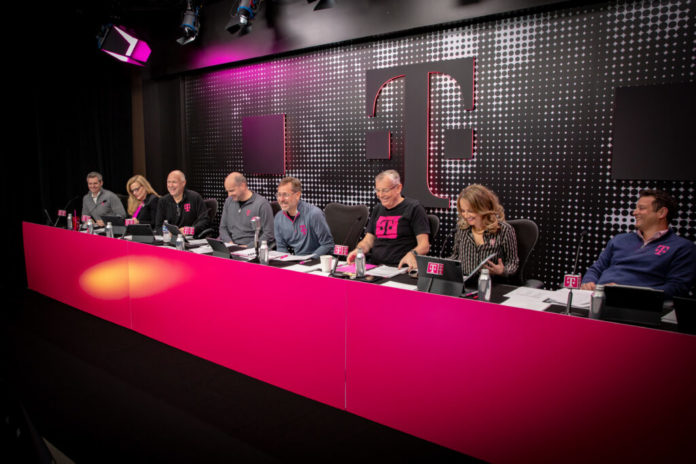T-Mo’s strategy is ‘differentiated and durable,’ says CEO Mike Sievert
T-Mobile US continues to be the mobile network operator to beat, delivering another strong quarter of customer and financial results.
Analysts had expected even rosier numbers in terms of revenues and customer additions, however, and sent the company’s stock down slightly as a result.
Postpaid net account additions were 287,000 and postpaid net phone additions were 538,000 on total net adds of 1.3 million—which, while slightly less than the same time last year and part of an industry-wide “normalization toward pre-pandemic levels,” the Uncarrier lost no chance to point out that the latter number was higher than AT&T and Verizon’s quarterly figures, combined. Its high-speed internet subscriber net adds gained more momentum and hit 523,000, which T-Mo bragged was more than AT&T, Verizon, Comcast and Charter added altogether, during the first quarter of the year. Executives on the company call said that its home broadband gains pulled heavily from cable companies.
Service revenues were up 3% year-over-year to $15.5 billion, and postpaid service revenue was up 6% compared to the same time last year.
The company’s profits were also up substantially, jumping 172% to $1.9 billion in the first quarter of 2023, even as the company repurchased 33 million shares for $4.8 billion. T-Mo is upbeat on its momentum, raising its overall guidance for customer numbers as well as various financial metrics.
“Our results for Q1 continue to demonstrate that no matter the competitive environment, our unique formula of offering the best network and the best value continues to produce best-in-class outcomes,” said CEO Mike Sievert on the company’s quarterly results call.
On those broadband numbers, CMO Mike Katz told analysts that most customers are coming from cable providers. “We have built a model and a go-to-market process that now is reliably delivering plus or minus 500,000 customers a quarter,” he said, which makes the operator confident that it will reach its customer goals within its expected timeline. T-Mo has about 3.2 million home internet customers now and has said that it anticipates having 7-8 million internet customers by 2025. Sievert, when asked about potential network capacity constraints and the use of millimeter wave spectrum, said that he expects to be in-line with that figure and still fall within the realm of selling excess capacity.
“We have created a nationwide mapping of every household in this country,” he explained, saying that T-Mobile maps customers “to every sector on every tower” and determines the areas where “no normal amount of mobile wireless use will take up our rapidly expanding capacity”—and that is where it approves service applications for home internet. That strategy, Sievert says, “takes us into those high single-digit millions of households.” Whether or not millimeter wave will come into play, he said, will depend on whether T-Mo decides to “entertain the idea of a capital burden to 5G home Internet plan. And yeah, we would entertain that. It would have to be smart. We would have to have a way to make it capital efficient. … We haven’t taken any decisions on that,” he concluded. Former VP of Technology and now President and Strategic Network Advisor Neville Ray chimed in to add that the carrier is “always looking at millimeter wave when we are doing trials and testing. But it’s limited in reach, and we have to remember that it’s limited in reach, and we will put it into an economic formula over time to see if it makes sense to pursue it.”

